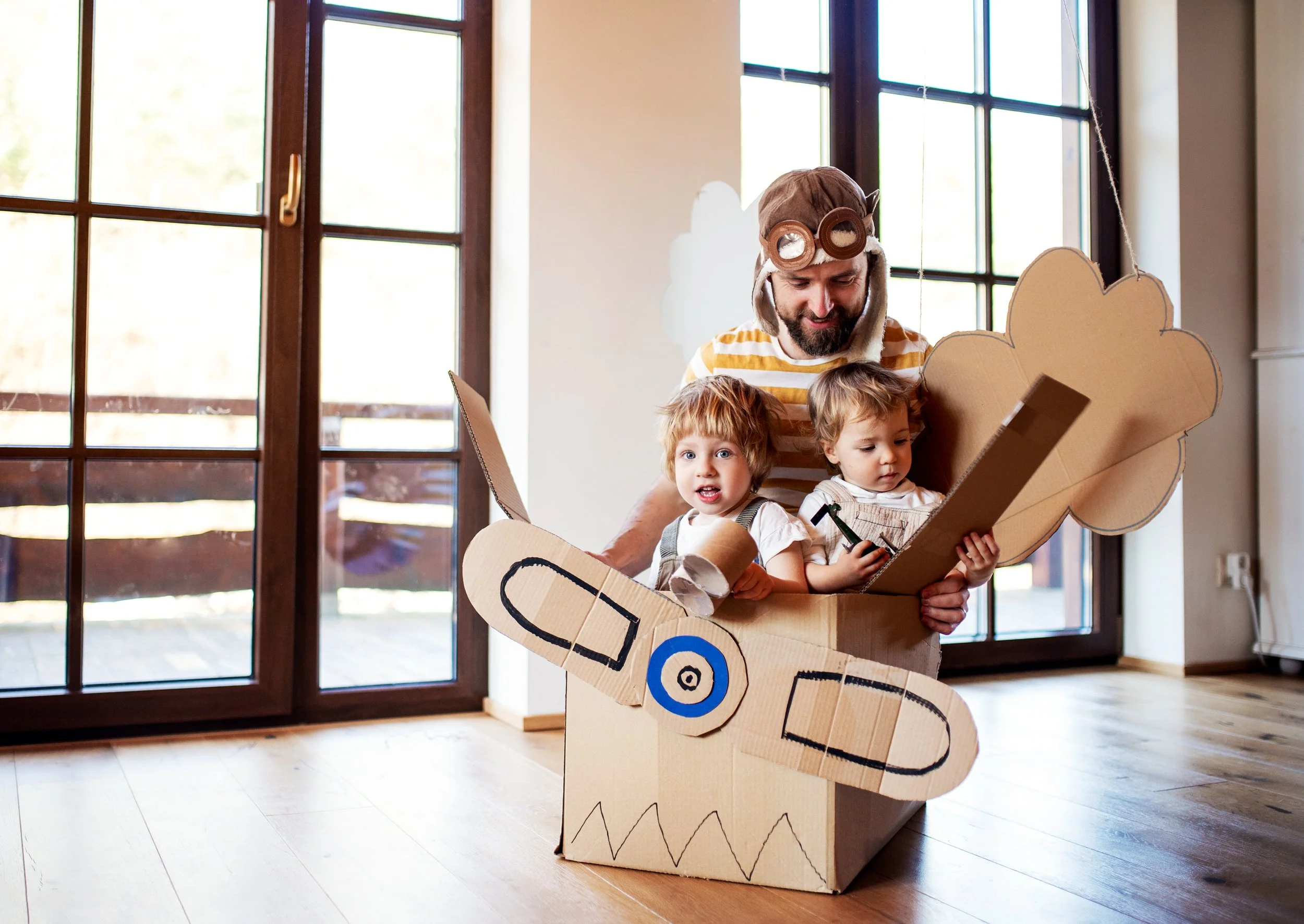3 Stages Of Play For At Home Speech Activities With Your Child
Finding the best activities for your at home speech & language practice is important so you meet your child where they're at and help them grow step-by-step!
We wanted to create an inventory of speech and language activities you can do at home, using what you already have! Our team of speech therapists and moms created a list of the most common toys (and non-toys) that toddlers love to play with; and we've created quick and easy at home speech therapy guides for each.
But not every child is the same! So before you get started, you'll want to know which stage your little one is at. We've broken toddler play into 3 stages.
Fun Fact! Did you know that language skills are correlated with the kind of play your child enjoys?
It's true. Play and language skills develop in unison!
Finding the best stage for your child will be important because you want to reinforce the things they can already do, while also supporting them in taking baby steps towards expanding their communication.
Just like we wouldn't expect a baby to go from crawling to running over night, we want to avoid practicing with activities that are too hard for your child right now.
You'll see our 3 Stages Of Play below with a description in each! Find the description that matches your child the best.
Then scroll to the end of the page to see our growing inventory of quick and easy at home speech activities!
Explorers
Children in the Explorer stage are learning about communication. An Explorer doesn’t talk yet, but are exploring communication through facial expressions, tone of voice, and gestures.
Early Explorers will be interested in simply watching you and the world around them. Later Explorers will try to copy you and will use some gestures to communicate (like pointing and waving.)
Explorers experiment with the different sounds their mouth can make. Children at this stage make raspberries, various sounds, and may even babble or “speak in their own language.”
Your Explorer plays by touching/looking at toys and perhaps putting objects in their mouths. Explorers might enjoy container play, pushing buttons, shaking toys, and banging toys on surfaces. Later Explorers might be playing with familiar objects the way they were intended, such as putting a toy spoon in their mouth, putting a hairbrush on their head, etc.
Pioneers
Children in the Pioneer stage talk to you with single words and gestures. They continue to use all the communication strategies they discovered in the Explorer stage, but now they are also saying one, a few, or even as many as 100 words. The words they say probably don’t sound very much like the adult version yet, but you know what they are saying.
As they learn to say new words, a Pioneer’s play evolves to match their new communication skills. They begin to enjoy pretending, although it stays pretty simple and they probably enjoy repeating the same pretend play the whole time. They might enjoy pretending to stir with a spoon, pushing a toy train on its track, scooping dirt with a construction vehicle, or laying a baby doll in a bed. They might make sound effects to go with their pretending, such as making vehicle sounds, making animal sounds, or saying “mmmm!” with play food.
Builders
Children in the Builder stage are combining words together when they talk in short sentences. They enjoy having little back and forth conversations that you can understand, whether it’s answering/asking questions or talking about something you see.
This is also the stage at which children will begin to have little conversations when playing. They may commentate on what’s happening or pretend that the characters are talking to one another.
Your Builder will still play using the techniques they learned in the Pioneer stage, but will start combining more than one event in their play. For example, they might feed their baby doll then put it to bed. Or they might fill their dump truck at one location, then drive it elsewhere and dump it. You might see them “cook” soup with play food, stir it, and then serve it to you.
Quick & Easy At Home Activities For Speech And Language
Search for a toy or item that you have at home. Click to see how you can practice speech and language!
© 2020-2025. Stephanie Keffer Hatleli, MS CCC-SLP. All Rights Reserved.
The content offered on ToddlerTalk.com is for informational purposes only. Toddler Talk is not engaged in rendering professional advice, whether medical or otherwise, to individual users or their children or families. No content on this site, regardless of date, should ever be used as a substitute for direct medical advice from your doctor, speech language pathologist, or other health professional. By accessing the content on ToddlerTalk.com, you acknowledge and agree that you are accepting the responsibility for your child’s health and well-being. In return for providing you with information related to home speech and language practice, you waive any claims that you or your child may have as a result of utilizing the content on ToddlerTalk.com.

